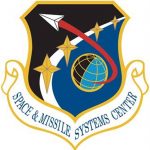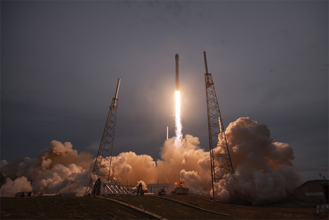The Air Force and the Army are looking for companies interested in helping advance a new generation of technology for GPS satellites, ground stations, and receivers.
Both military services have issued requests for information (RFIs), formal announcements through the Federal Business Opportunities website <FBO.gov> to gain insight into current industry capabilities and interest, as part of programs aimed at boosting overall positioning, navigation, and timing (PNT) performance and dealing with issues such as jamming and spoofing.
The Air Force and the Army are looking for companies interested in helping advance a new generation of technology for GPS satellites, ground stations, and receivers.
Both military services have issued requests for information (RFIs), formal announcements through the Federal Business Opportunities website <FBO.gov> to gain insight into current industry capabilities and interest, as part of programs aimed at boosting overall positioning, navigation, and timing (PNT) performance and dealing with issues such as jamming and spoofing.
The Air Force Research Laboratory (AFRL), as part of its Navigation Technology Satellite-3 program, wants to hear from organizations interested in developing an integrated satellite payload and ground segment to support navigation experimentation.
NTS-3 would be the third such spacecraft in the decades-long NTS series. The NTS-1 and NTS-2 satellites, which flew in 1974 and 1977 respectively, qualified the rubidium and cesium clocks that are now the backbone of today’s GPS constellation. Continuing the tradition, AFRL plans to demonstrate an accuracy-enhancing clock on NTS-3 as well as ephemeris correction technologies.
Those, however, are just two items on AFRL’s long task list for this latest iteration of spacecraft technology development. The research lab wants to be able to try broadcasting a greater number of signals on the L1 frequency and develop a way to assess the “agility” of L1. They also hinted, in answer to an industry question, that "L2 is a desirable second frequency to enable ionospheric correction."
The AFRL researchers hope to test technologies to boost anti-jam performance and counter spoofing as well as explore modifications to all layers of the GPS signal (carrier, code, and data layers and sublayers) in hopes of enhancing resiliency and performance. They want to look at ways to manage cyber threats, improve on-board GPS signal integrity detection, and study how to maintain signal accuracy after losing contact with ground control. Moreover, they want to investigate antenna configurations as an avenue for ensuring GPS signal availability and strength for both terrestrial and space users.
Fortunately, those chosen for the contract will be responsible only for the PNT payload — the Air Force plans to provide a satellite bus or “host” for multiple payloads, it said, as well as the satellite’s launch.
In addition to supporting all of the above activities, the ground segment will be used to study automated operations and different ways to reconstitute ground control in the event of an attack. AFRL wants to be able to demonstrate spacecraft command and control through commercial ground antennas and compatibility with other existing and planned ground systems. Like the payload, the ground segment will be used to study ways to handle cyber security threats.
Responses to the RFI are due April 8.
The ultimate scope of the project, however, remains uncertain, said a source familiar with the RFI, who requested anonymity to be able to speak freely. Even so, they believed NTS-3 is a priority for AFRL.
‘They are moving out briskly on this one," the expert told Inside GNSS.
Exploiting Commercial Advances
The Army’s project is focused on incorporating existing commercial technology rather than researching new capabilities. Several Army organizations are collaborating to seek information from companies with technology and products, including solutions still under development, that could support a new vehicle navigation system (VNS). The VNS would "fully replace" existing satellite navigation receivers in vehicles ranging from lighter trucks like the High Mobility Multipurpose Wheeled Vehicle or Humvee, to heavier trucks and tanks including the M2 Bradley.
At the top of the technology requirements list is the capability to deal with jammers. The Army wants to know what the amount of observed power reduction would be for jammer types, including broadband, narrow band, continuous wave (CW), pulsed CW, swept CW, and spectrally matched jammers, when employing anti-jam antennas. The VNS must also be able to integrate upcoming military GPS user equipment (MGUE) and the new military M-code as well as commercial Ethernet and PNT sensors such as inertial measurement units, ranging, vision navigation, and celestial precision clocks.
The Army wants receivers that can use spot beams and integrate C/A-, and P(Y)- code as well as pseudolite signals — in both the L1 and L2 frequency bands. The equipment must also support Network Time Protocol (NTP) and Precision Time Protocol (PTP) as well as VICTORY (Vehicle Integration for C4ISR/EW Interoperability) standards.
Perhaps most interesting, the Army is also taking a true GNSS approach, requiring the VNS to be able to use signals from other satellite navigation constellations.
Replies to the RFI are due April 11.





